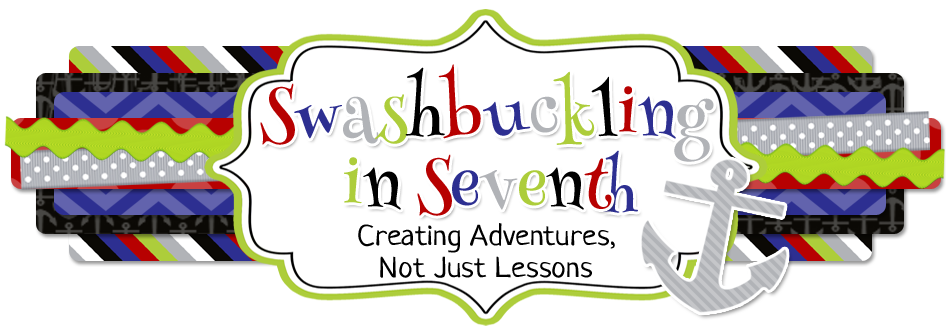I don't know if our Fear Factor Food Face Off kept the students interested in the story,
Fish Cheeks, or if it was the mini-lessons using the Notice and Note Signposts from
Notice and Note: Strategies for Close Reading by Kylene Beers and Robert Probst.
I do know that these signposts had us read deeper and closer into this text than I ever have with students! We noticed and noted three of the six signposts.
The first was Words of the Wiser. Students didn't have a difficult time finding this one on their own. In the story, everyone leaves the dinner except for Amy and her mother. From her mom's advice, students made the following inferences:
- Be yourself. Embrace your culture.
- It's okay to be different.
- Feel good about yourself so others see you in a good light.
The second was Contrast and Contradictions. After explaining the signpost and the leading question, students needed more time and peer interaction to find this one. In the end, the decided on the spot where Amy's father gets Robert's father, who's a minister, to burp. We analyzed this right to the signal words and wondered why Ms. Tan specifically chose the words "manage", "muster", and "quiet" to describe this incident. I was amazed by the inference they made:
- trying to be polite as a guest
- wanted to be respectful of Amy's customs/culture
- trying to fit in
- wanted to show that he appreciated the meal
- not used to burping
- didn't want to embarrass his son which is why it was quiet
The final signpost we found was Aha Moment. Even though this was their first introduction into these signposts, the students found this one right away. They found it to be at the end when Amy understand why her mom cooked the foods she did. Students decided that Amy learned:
- appreciate her culture, herself, and her family especially her mom
- She'll stop trying to be someone she's not.
- She won't have shame for herself, family, or culture in the future.
To analyze how Amy's feelings change over the course of the story, we made a feelings foldable to pull out the best quotes as evidence of the feeling. Out of the five feelings, we chose the ones that impacted her and caused changes.
To practice writing a response about the text, I used the
PEEL graphic organizer from Tracee Orman. It very simply states exactly what you need to do in your writing. State your
Point. Give
Evidence from the text and
Explain the evidence.
Link back to your point or to your next point. As a class, we discuss and decided on what to put in the graphic organizer.
I took what the classes came up with and created their final versions. During the next class, I shared the final with them and analyzed how little needed to be added if you fully complete the graphic organizer.
For three classes, all students were engaged in the story and class even though the food face off was only 15 minutes of the unit. I believe the food eating put excitement into the unit while the signposts made it easier for students to access and infer what the author was saying, and the PEEL graphic organizer made it easier to understand how to write about what they read.
If you haven't gotten the Notice and Note book yet, you need to run to the bookstore or get Amazon Prime so that you can have it tomorrow. You'll wish that you had it yesterday because it's that awesome!






